Caryn’s Thoughts
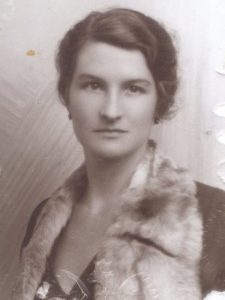
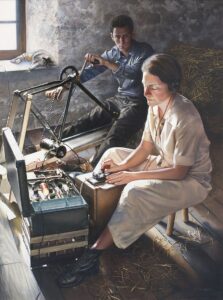 During World War II, the Allies used a number of spies, many of them women, but none of them could compare to Virginia Hall, who was considered by the Nazis to be the “most dangerous of all Allied spies.” I can’t think of a greater honor for a spy. It seems to me that the women spies were really the best spies of the war. Maybe it was because they just didn’t expect the women to be spies. That was a big advantage. Virginia Hall had one other thing that made it seem impossible to think of her as a spy…a prosthetic leg, which created a bit of a limp. It was the leg that earned Hall her other name…Limping Lady.
During World War II, the Allies used a number of spies, many of them women, but none of them could compare to Virginia Hall, who was considered by the Nazis to be the “most dangerous of all Allied spies.” I can’t think of a greater honor for a spy. It seems to me that the women spies were really the best spies of the war. Maybe it was because they just didn’t expect the women to be spies. That was a big advantage. Virginia Hall had one other thing that made it seem impossible to think of her as a spy…a prosthetic leg, which created a bit of a limp. It was the leg that earned Hall her other name…Limping Lady.
Born to wealthy parents in Baltimore, Maryland in 1906, Hall was expected to marry well, and become a wife and mother, but she had other plans. Describing herself as “cantankerous and capricious, Hall set her sights on being a diplomat after studying in Paris and falling in love with France, but out of 1500 US diplomats, only 6 were women, and Hall was turned down several times. Still hoping, she took a job as a clerical worker and the US Embassy in Warsaw, Poland. Then tragically, a hunting accident on a trip to Turkey, followed by gangrene infecting the leg, caused it to require amputation, which also disqualified her from the US Foreign Service. It was a crushing blow. She decided to resign from her job and move to Paris in 1939, just as World War II was erupting.
Hall’s life took a dramatic turn on May 10, 1940, when Germany invaded France. Volunteering to drive ambulances for the French army during the six-week long Battle of France, Hall transported wounded soldiers from the front line, while dodging fire from German fighter planes overhead. With the French surrender, Hall traveled to London to support the British war effort there. As she traveled, she impressed an undercover agent who put her in touch with a senior officer in the Special Operations Executive (SOE), which was Winston Churchill’s new secret service. Female operatives were not employed By the SOE, but after six months of failing to infiltrate a single new agent into France, they decided to send Hall to France as the SOE’s first female agent in the country. In the end, she would spend nearly the entire war in France, first as a spy for Britain’s SOE and later for the US Office of Strategic Services (OSS) Special Operations Branch.
Hall had a bit of a sense of humor, especially when it came to her heavy wooden leg, even nicknaming it Cuthbert. The leg was no obstacle to Hall’s courage either, nor her determination to defeat the Nazis, whom she bitterly hated. Hall used everything at her disposal while undercover in France, and proved herself “exceptionally adept at eluding the Gestapo as she organized resistance groups, masterminded jailbreaks for captured agents, mapped drop zones, reported on German troop movements, set up safe houses, and rescued escaped POWs and downed Allied pilots.” Like many veterans of that era, Even years after the war, Hall rarely talked about her extraordinary career. She attributes the habit to her years as a spy. She once said, “Many of my friends were killed for talking too much.”
Spy networks were amazingly able to hide in plane site, and when Hall arrived in the Vichy region of France in August 1941, it was under the cover story of being a war correspondent for the New York Post newspaper. Following her arrival in Toulouse, Hall established a resistance network called HECKLER, which gathered information about German troop movements and helped downed British pilots escape to safety. Following her work in Toulouse, she traveled to Lyon, where she helped coordinate activities of the French Resistance. Her plans changed when the United States entered the war. As a US citizen, she could be considered a traitor for working for the British spy networks, because the United States had been considered neutral. Hall was forced underground, but continued operating in France for another 14 months. A good spy needs to have a variety of disguises at the disposal, and Hall became adept at changing her appearance on a moment’s notice. She was also known by multiple aliases. She needed to be almost invisible, at least to the enemy. The Germans, at least early in the war, didn’t think that a woman was capable of being a spy. What a serious miscalculation that turned out to be!!
Hall’s extraordinary effectiveness amazed the SOE commanders and helped change their minds about women operating in combat zones. A year after Hall began working undercover, the SOE finally decided to send more female agents into the field. Hall’s abilities paved the way for more women to serve their countries in this important capacity. It also quickly put women spies, and Hall specifically, on the radar for the Gestapo. Soon, the hunt for “the Limping Lady” was on. They knew only her from a composite sketch, which was to her advantage. Their internal communications declared: “She is the most dangerous of all Allied spies. We must find and destroy her.” Gestapo agents…including notorious investigator Klaus Barbie, who would later be awarded the Iron Cross for torturing and executing thousands of resisters…closing in on her after the Germans seized control of Vichy France in November 1942, Hall was forced to escape to Spain.
To escape France was no easy task. It meant a three day journey on foot in heavy snow across the Pyrenees mountains. The trek was made even more challenging with an 8-pound artificial leg bound to her body with straps and a belt at the waist. At one point, she jokingly mentioned in a message to the SOE that she was concerned that “Cuthbert” would cause problems during her escape. In a funny twist, the receiver of the message didn’t recognize the nickname she used for her prosthetic. SOE headquarters responded, “If Cuthbert is giving you difficulty, have him eliminated.” In the end, it wasn’t “Cuthbert” that caused her problems. When she arrived in Spain, she was arrested and imprisoned for illegally entering the country. Hall was an inmate for six weeks before an inmate being released was able to get word to American officials in Barcelona about her presence so they could arrange her release. She finally made it back to London in January 1943, where she was quietly made a honorary Member of the Order of the British Empire.
Following her imprisonment, the SOE refused to send her back to France, because they thought was too dangerous with her high profile. That decision was unacceptable to Hall, who decided to join the American Office of Strategic Services (OSS), which was just establishing their own intelligence operation in France. The Nazi troops were everywhere by that time, so Hall took even more extreme measures to disguise herself. Among them, a French milkmaid, causing her to need to have a rather scary dentist grind down her lovely, white American teeth. In the Haute-Loire region of central France, she disguised herself as an elderly milkmaid and got to work on her radio, coordinating airdrops of arms and supplies for the resistance fighters who were blowing up bridges and sabotaging troop trains, and reporting German troop movements to Allied forces.
Her second tour in France in 1944 and 1945 was even more successful than her first, and at its peak, her network consisted of 1,500 people. With the Germans constantly attempting to track her radio signals, Hall stayed on the move, camping out in barns and attics. As D-Day approached, Hall was operating as a guerrilla leader, and she armed and trained three battalions of French resistance fighters for sabotage missions that helped paved the way for the Allied invasion. One of her many radio reports shows the breadth of her missions. She stated that her team had destroyed four bridges, derailed freight trains, severed a key rail line, and downed telephone lines. By the war’s end, Hall had spent over three full years operating undercover behind enemy lines and, in the words of an official British government report at the end of the war, she was “amazingly successful.”
After the war, when the OSS was dissolved, it became the Central Intelligence Agency (CIA), Hall became an intelligence analyst. For her wartime service, she was awarded the Croix de Guerre with Palme by France and became the only civilian woman during WWII to be awarded a Distinguished Service Cross by the US, which recognizes exceptional valor and risk of life in combat. President Harry Truman wanted to have a public ceremony for the presentation of the medal, but Hall requested a private ceremony instead, saying that she was “still operational and most anxious to get busy.” Hall worked at the CIA until she retired in 1966 and took 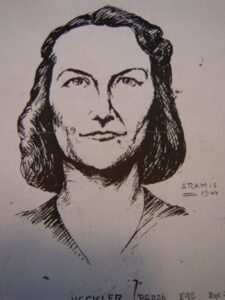
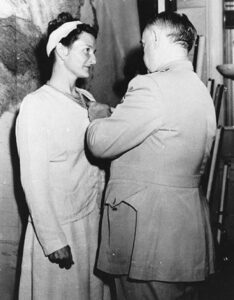 quiet pride in her service to her country, although she always maintained a wry sense of humor about it. Her response to receiving the Distinguished Service Cross was, “Not bad for a girl from Baltimore.”
quiet pride in her service to her country, although she always maintained a wry sense of humor about it. Her response to receiving the Distinguished Service Cross was, “Not bad for a girl from Baltimore.”
While in Haute-Loire, Hall had met and fallen in love with an OSS lieutenant, Paul Goillot, who worked for her. In 1957, the couple married after living together off-and-on for years. Hall went on to head the CIA. The other four heads were men. Hall was code named Marie and Diane, but the Germans gave her the nickname Artemis, and the Gestapo reportedly considered her “the most dangerous of all Allied spies.” Because of her artificial foot, she was also known as “the limping lady.” She died on July 8, 1982 at the age of 76 in Barnesville, Maryland.
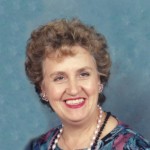
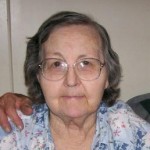 When my moms passed away, my mom, Collene Spencer in 2015 and my mother-in-law, Joann Schulenberg in 2018, Mother’s Day was forever changed for me. I no longer had a mom on this earth. It was a lonely feeling, because they were both so very special. I couldn’t have asked for better moms in my life. They were somewhat different from each other, but they both had very special qualities, and each had special gifts. Both of my moms were excellent cooks, but they made different specialties. My sister, Cheryl Masterson found some cute questionnaires of memories to put together with her grandchildren, and one of the questions concerned the favorite food their mother made. That got me thinking about my moms, and the foods they made. Probably my favorite of my mom’s meals, was Tuna Casserole. I know that may sound odd, but it was amazing, and for some odd reason, I can’t make it taste like hers did, recipe or not. I don’t know what she did, but my guess is that it was made with love. My mother-in-law made an unusual dish, that I would never have guessed that I would love, but when my husband begged me to eat it with an open mind (we were dating at the time), I thought my goose was cooked. Her dish was Squash and Pancakes. Now you can wrinkle your nose all you want, but it is amazing, and I love it. The memories you have are a sweet thing when your loved one is in Heaven and you can’t see them anymore.
When my moms passed away, my mom, Collene Spencer in 2015 and my mother-in-law, Joann Schulenberg in 2018, Mother’s Day was forever changed for me. I no longer had a mom on this earth. It was a lonely feeling, because they were both so very special. I couldn’t have asked for better moms in my life. They were somewhat different from each other, but they both had very special qualities, and each had special gifts. Both of my moms were excellent cooks, but they made different specialties. My sister, Cheryl Masterson found some cute questionnaires of memories to put together with her grandchildren, and one of the questions concerned the favorite food their mother made. That got me thinking about my moms, and the foods they made. Probably my favorite of my mom’s meals, was Tuna Casserole. I know that may sound odd, but it was amazing, and for some odd reason, I can’t make it taste like hers did, recipe or not. I don’t know what she did, but my guess is that it was made with love. My mother-in-law made an unusual dish, that I would never have guessed that I would love, but when my husband begged me to eat it with an open mind (we were dating at the time), I thought my goose was cooked. Her dish was Squash and Pancakes. Now you can wrinkle your nose all you want, but it is amazing, and I love it. The memories you have are a sweet thing when your loved one is in Heaven and you can’t see them anymore.
My idea of Mother’s Day had to turn toward, of course, being mom to my girls, Corrie Petersen and Amy Royce, but also to them being mothers, Corrie to Chris (fiancée Karen) and Josh (girlfriend Athena), and Amy to Shai and Caalab (girlfriend Chloe), all of whom I consider my own. Mother’s Day also turned to Chris’ fiancée, Karen, who is mom to Cambree and Caysen, my precious great grandbabies. Half of my family lives in Washington, and half in Wyoming. That has made our holidays different too. Nevertheless, we love each and every one of them, and they love us. I am a very blessed mom. I also thought of the moms in my family, my sisters, Cheryl 
 Masterson, Caryl Reed, Alena Stevens, and Allyn Hadlock; my sisters-in-law, Debbie Cook and Jennifer Parmely, as well as my late sister-in-law, Rachel Schulenberg. I thought of their daughters and granddaughters with children, and realized that while my moms are in Heaven now, the tradition continues. I cant name or picture them all, but they are all great moms. Moms will always be with us, either in life or in our hearts. Mother’s Days will change as time marches on, but we will always have those moms. Nothing can take that from us. Happy Mother’s Day to all the moms. Have a blessed day!!
Masterson, Caryl Reed, Alena Stevens, and Allyn Hadlock; my sisters-in-law, Debbie Cook and Jennifer Parmely, as well as my late sister-in-law, Rachel Schulenberg. I thought of their daughters and granddaughters with children, and realized that while my moms are in Heaven now, the tradition continues. I cant name or picture them all, but they are all great moms. Moms will always be with us, either in life or in our hearts. Mother’s Days will change as time marches on, but we will always have those moms. Nothing can take that from us. Happy Mother’s Day to all the moms. Have a blessed day!!
 My grand-niece, Maeve Parmely is a child of the Covid lockdowns, and the secondary phenomenon, Stranger Danger. As a two year old girl, Maeve’s time was suddenly spent all pretty much with her immediate family, and maybe sometimes grandparents, so she didn’t know many other people very well…including aunts, uncles, and cousins. Now that families can gather together again, Maeve’s parents, Eric and Ashley Parmely suggested monthly family dinners, with the purpose of letting the children get reacquainted with family. For Maeve’s older siblings, Reagan, Hattie, and Bowen getting to know family was easy, but for Maeve, it was a little more difficult. She is a little more shy and reserved. She will come around, of course, and when her uncle, Bob Schulenberg brings chips to the party, it really helps break the ice. Those chips were an ice breaker for everyone, even if we did eat before dinner, and they certainly didn’t ruin anyone’s appetite either.
My grand-niece, Maeve Parmely is a child of the Covid lockdowns, and the secondary phenomenon, Stranger Danger. As a two year old girl, Maeve’s time was suddenly spent all pretty much with her immediate family, and maybe sometimes grandparents, so she didn’t know many other people very well…including aunts, uncles, and cousins. Now that families can gather together again, Maeve’s parents, Eric and Ashley Parmely suggested monthly family dinners, with the purpose of letting the children get reacquainted with family. For Maeve’s older siblings, Reagan, Hattie, and Bowen getting to know family was easy, but for Maeve, it was a little more difficult. She is a little more shy and reserved. She will come around, of course, and when her uncle, Bob Schulenberg brings chips to the party, it really helps break the ice. Those chips were an ice breaker for everyone, even if we did eat before dinner, and they certainly didn’t ruin anyone’s appetite either.
Maeve has lived on a farm all her life. She loves the animals. On day when we were out  there, Maeve went out exploring, or just to get some quiet time, and ended up toward the front of the property, with three cows. Maeve was not afraid of them, nor they of her. They are actually all very comfortable together, and the cows somehow understand that Maeve is little, and they need to be careful, but that in reality, Maeve is absolutely the boss. In fact, Maeve’s great aunt, Nancy Eighmy calls her the cow whisperer, and I would have to agree. They just like to be near this precious little girl. And it’s not just the cows that Maeve loves to be around. The family has new kittens right now, and They are very much the rage. There are also the horses, baby goats, turkeys, chickens, and pigs. That means there is lots of entertainment. She also loves the mountains and snow, especially if somebody carries her. Still, she loves being in the snow.
there, Maeve went out exploring, or just to get some quiet time, and ended up toward the front of the property, with three cows. Maeve was not afraid of them, nor they of her. They are actually all very comfortable together, and the cows somehow understand that Maeve is little, and they need to be careful, but that in reality, Maeve is absolutely the boss. In fact, Maeve’s great aunt, Nancy Eighmy calls her the cow whisperer, and I would have to agree. They just like to be near this precious little girl. And it’s not just the cows that Maeve loves to be around. The family has new kittens right now, and They are very much the rage. There are also the horses, baby goats, turkeys, chickens, and pigs. That means there is lots of entertainment. She also loves the mountains and snow, especially if somebody carries her. Still, she loves being in the snow.
Maeve is very resourceful. If she wants something, she knows how to get it for herself. She can climb, and  reach, and if that doesn’t work, she will resort to getting her older siblings to get her what she wants. Hmmmm…she might be a sibling whisperer too. Maeve doesn’t talk too often, although she certainly can. It’s just that her siblings usually see to her every need, often before she even asks for things. I guess that just comes from being the baby of the family. Maeve is well cared for, and maybe a little bit babied, but she is just so darned cute that you just have to forgive her family for spoiling her a little. And besides, she doesn’t seem to be very spoiled at all. Today is Maeve’s 2nd birthday, and she gets to share her day with her moms Mothers Day, which is very special too. Happy birthday sweet Maeve. Have a great day!! We love you!!
reach, and if that doesn’t work, she will resort to getting her older siblings to get her what she wants. Hmmmm…she might be a sibling whisperer too. Maeve doesn’t talk too often, although she certainly can. It’s just that her siblings usually see to her every need, often before she even asks for things. I guess that just comes from being the baby of the family. Maeve is well cared for, and maybe a little bit babied, but she is just so darned cute that you just have to forgive her family for spoiling her a little. And besides, she doesn’t seem to be very spoiled at all. Today is Maeve’s 2nd birthday, and she gets to share her day with her moms Mothers Day, which is very special too. Happy birthday sweet Maeve. Have a great day!! We love you!!
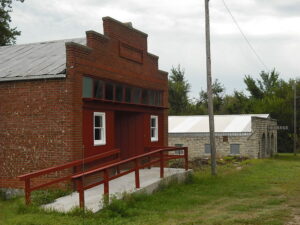 The “almost” ghost town of Bushong, Kansas got its start in 1886 when the Missouri Pacific Railroad built its tracks across Northern Lyon County. The railroad station was named Weeks, as was the town at first, after Joseph Weeks, who donated 20 acres of land to the railroad. After the railroad built on part of the acreage, it sold some of the acreage as town lots. Although there was no town company, per se, Joseph Weeks also platted another 20 acres and sold lots on that, and a town was born. The Missouri Pacific Railroad also built a large tank pond one mile east of town to supply the steam engines with water, as they pulled their trains over the hills to Council Grove. There were large pastures filled with cattle in the area, and cattle pens were constructed to hold the cattle for shipping. The railroad also bought a valuable stone quarry south of Bushong and shipped quarried rock to Kansas City, about an hour and a half to their Northeast.
The “almost” ghost town of Bushong, Kansas got its start in 1886 when the Missouri Pacific Railroad built its tracks across Northern Lyon County. The railroad station was named Weeks, as was the town at first, after Joseph Weeks, who donated 20 acres of land to the railroad. After the railroad built on part of the acreage, it sold some of the acreage as town lots. Although there was no town company, per se, Joseph Weeks also platted another 20 acres and sold lots on that, and a town was born. The Missouri Pacific Railroad also built a large tank pond one mile east of town to supply the steam engines with water, as they pulled their trains over the hills to Council Grove. There were large pastures filled with cattle in the area, and cattle pens were constructed to hold the cattle for shipping. The railroad also bought a valuable stone quarry south of Bushong and shipped quarried rock to Kansas City, about an hour and a half to their Northeast.
As the town grew, more buildings were needed. The first school building was erected in 1886. The school was a two-story wood-frame structure, and it housed grades 1-8. The school was used until 1948. Then, students were moved to the brick high school building, and the old school building was sold and removed. When the new settlement gained a post office on January 31, 1887, the name was changed to Bushong in honor of Al “Doc” Bushong, who was a baseball player for the Saint Louis Browns. The player’s greatest success came when he was the starting catcher in the 1886 World Series. The Saint Louis Browns of the American Association beat the Chicago White Stockings of the National League. The team owner wanted to do something special for his team to mark their success. Somehow, he made the arrangements for each player to have a town named after them. While all the players had towns named after them, Bushong is the only town that still carries the name of the player they were to have honored. In 1887, Bushong had a population of about 75 people. The first station agent was R D Cottrell, who also built the Bushong Hotel, which he operated with his wife until his death, then she remarried and continued to operate the hotel for a few more years. Other early businesses included a general store, a flour mill, blacksmith, lumber yard, boarding house, and a hog fence factory.
In the town’s saddest event, twelve members of the population died within 48 hours of each other in February 1894, when a diphtheria epidemic gripped the town. It was the last great pandemic of the 19th century, and among the deadliest pandemics in history. The worst effects of the pandemic took place from October 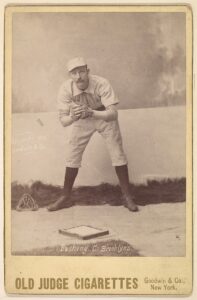 1889 to December 1890, with recurrences in March to June 1891, November 1891 to June 1892, winter of 1893–1894, and early 1895. At the same time, the school in Bushong was closed. The towns first and only doctor, Chester L Stocks, set up his practice in 1896. He was also a druggist, and he continued to serve the community until 1934.
1889 to December 1890, with recurrences in March to June 1891, November 1891 to June 1892, winter of 1893–1894, and early 1895. At the same time, the school in Bushong was closed. The towns first and only doctor, Chester L Stocks, set up his practice in 1896. He was also a druggist, and he continued to serve the community until 1934.
For a brief time in 1899, the town boasted a newspaper called the Bushong Bulletin. It was a small town, and really, how much news could there be. A Methodist church was established that year. It had one large room with a pot-bellied stove in the center and an organ. By 1910, Bushong was a thriving town with a population of 250. The post office even had one rural route. The town also had a number of general stores, a hotel, public school, telegraph, telephone, and express service, and its railroad was providing a considerable amount of shipping. For many years trains stopped at Bushong for passengers. When passenger service was discontinued, trains could still be stopped by “flagging” them down to load freight or livestock. It finally became necessary to establish the Bushong Rural High School, and classes were held in the upper room of the grade school in 1913. Later, students were taught in other town buildings, with the first graduation taking place in 1916. The town also became home to The Bushong State Bank, which was chartered in 1916, but like many other banks, it failed during the Great Depression and closed in 1932. A new brick High School was erected in 1918 consisting of four rooms. Later additions were made, including a gymnasium in 1926. Unfortunately, a fire in the 1920s destroyed a large portion of the downtown area, and the buildings were never rebuilt. In 1923 a new Methodist church building was erected on the same site as the first one. The building utilized the bell from the old church in the belfry. That year, the town’s population was 150. However, the next year, severe drought and heat caused many settlers to move from the area. Bushong was incorporated in 1927, and L A Grimsley was elected as the first mayor. At that time, the town had a population of about 150 and continued to maintain its two room grade school and a four-room rural high school. The Methodist Church and Sunday School were well attended. At about that same time, electricity was approved, and in 1936 Bushong voted to sell their utility to Kansas Electric Company of Emporia. Bushong’s early telephone system was part of the Farmers Mutual Telephone Association, a cooperative company that everyone helped to construct and care for lines and poles. The telephone company was sold in 1960. Like numerous other communities, Bushong was hit hard by the Great Depression and never recovered.
In 1955, school enrollment had dropped to such a degree that Bushong consolidated with the other area schools. High school pupils went to nearby Allen until Northern Heights opened in the fall of 1957, consolidating the high schools of Bushong, Allen, Admire, and Miller. Grade school continued at Bushong until 1966 when all area 3rd and 4th graders went to Bushong and the other grades to Allen and Admire. The school finally closed  in 1970, and the city purchased the building for use as a Civic Center. Currently, the building is abandoned. The railroad discontinued the depot in 1957, and later the depot building was torn down.
in 1970, and the city purchased the building for use as a Civic Center. Currently, the building is abandoned. The railroad discontinued the depot in 1957, and later the depot building was torn down.
During the Cold War, Bushong was again in the spotlight. I became the location of one of the first generations of nuclear-tipped intercontinental ballistic missiles. One of several Atlas class missile silos developed in the Midwest, active from 1961-1965, was part of the 548th Strategic Missile Squadron was located in the small town. Unfortunately, that was still not enough to save the town from virtual extinction. Bushong’s post office closed on July 2, 1976. Today, Bushong is called home to only about 30 people with no open businesses. The old community is located about 20 miles northwest of Emporia. It’s strange how things work out. What starts out as a thriving town, sometimes gives way to a ghost town, while other times, the town grows to greatness.
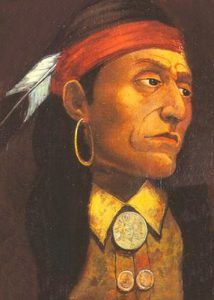 The pilgrims were not the only people who did not like, or accept, British rule. When the French sold some of their territory to the British, the Indian tribes in these areas were not happy about the new regime. The French had more or less left them alone to do as they chose, and so they tended to live in relative peace, but the British were a different kind of rule, and the Indians felt that they were far less conciliatory than their predecessors. It wasn’t that the French and the Indians got along well, after all they had just ended the French and Indian Wars in the early 1760s. It was simply that the British were more demanding and less giving in the area of the Indian rights, than the French had been.
The pilgrims were not the only people who did not like, or accept, British rule. When the French sold some of their territory to the British, the Indian tribes in these areas were not happy about the new regime. The French had more or less left them alone to do as they chose, and so they tended to live in relative peace, but the British were a different kind of rule, and the Indians felt that they were far less conciliatory than their predecessors. It wasn’t that the French and the Indians got along well, after all they had just ended the French and Indian Wars in the early 1760s. It was simply that the British were more demanding and less giving in the area of the Indian rights, than the French had been.
As the matter became more and more heated, an Ottawan Indian chief named Pontiac decided that it was time for the Indian tribes to rebel. So, he called together a confederacy of Native warriors to attack the British force at Detroit. In 1762, Pontiac enlisted support from practically every tribe from Lake Superior to the lower Mississippi for a joint campaign to expel the British from the formerly French-occupied lands. According to Pontiac’s plan, each tribe would seize the nearest fort and then join forces to wipe out the undefended settlements. In April 1763, Pontiac convened a war council on the banks of the Ecorse River near Detroit. It was decided that Pontiac and his warriors would gain access to the British fort at Detroit under the pretense of negotiating a peace treaty, giving them an opportunity to seize forcibly the arsenal there. However, British Major Henry Gladwin learned of the plot, and the British were ready when Pontiac arrived in early May 1763, and Pontiac was forced to begin a siege. His Indian allies in Pennsylvania began a siege of Fort Pitt, while other sympathetic tribes, such as the Delaware, the Shawnees, and the Seneca, prepared to move against various British forts and outposts in Michigan, New York, Pennsylvania, Maryland and Virginia, at the same time. After failing to take the fort in their initial assault, Pontiac’s forces, made up of Ottawas and reinforced by Wyandots, Ojibwas and Potawatamis, initiated a siege that would stretch into months.
A British relief expedition attacked Pontiac’s camp on July 31, 1763. They suffered heavy losses and were repelled in the Battle of Bloody Run. However, they did succeeded in providing the fort at Detroit with reinforcements and supplies. That victorious battle allowed the fort to hold out against the Indians into the fall. Also holding on were the major forts at Pitt and Niagara, but the united tribes captured eight other fortified posts. At these forts, the garrisons were wiped out, relief expeditions were repulsed, and nearby frontier settlements were destroyed.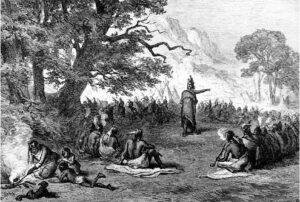
Two British armies were sent out in the spring of 1764. One was sent into Pennsylvania and Ohio under Colonel Bouquet, and the other to the Great Lakes under Colonel John Bradstreet. Bouquet’s campaign met with success, and the Delawares and the Shawnees were forced to sue for peace, breaking Pontiac’s alliance. Failing to persuade tribes in the West to join his rebellion, and lacking the hoped-for support from the French, Pontiac finally signed a treaty with the British in 1766. In 1769, he was murdered by a Peoria tribesman while visiting Illinois. His death led to bitter warfare among the tribes, and the Peorias were nearly wiped out.
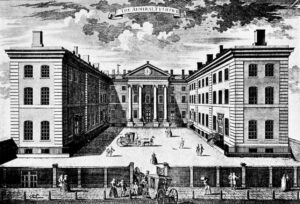 In a war, good intel is crucial. The opposing armies always use codes in messages so that their plans are not known. Breaking codes is not an easy task, nor is it a quick task. During World War I, the cryptanalysis section of the British Admiralty was called Room 40, also known as 40 O.B. (Old Building) (latterly NID25). The unit was formed in October 1914. It began when Rear-Admiral Henry Oliver, the Director of Naval Intelligence, gave intercepts from the German radio station at Nauen, near Berlin, to Director of Naval Education Alfred Ewing, who constructed ciphers as a hobby.
In a war, good intel is crucial. The opposing armies always use codes in messages so that their plans are not known. Breaking codes is not an easy task, nor is it a quick task. During World War I, the cryptanalysis section of the British Admiralty was called Room 40, also known as 40 O.B. (Old Building) (latterly NID25). The unit was formed in October 1914. It began when Rear-Admiral Henry Oliver, the Director of Naval Intelligence, gave intercepts from the German radio station at Nauen, near Berlin, to Director of Naval Education Alfred Ewing, who constructed ciphers as a hobby.
Ewing began recruiting civilians such as William Montgomery, who was a translator of theological works from German, and Nigel de Grey, who was a publisher. During the war, the war Room 40 decrypted around 15,000 intercepted German communications from wireless and telegraph traffic. The section’s most notable work was when they intercepted and decoded the Zimmermann Telegram, a secret diplomatic communication issued from the German Foreign Office in January 1917 that proposed a military alliance between Germany and Mexico. This was the most significant intelligence triumph for Britain during World War I, because it played a significant role in drawing the then-neutral United States into the conflict.
Room 40 operations began simply with the acquisition of a captured German naval codebook, the Signalbuch der Kaiserlichen Marine (SKM), and maps (containing coded squares) that Britain’s Russian allies had passed on to the Admiralty. Before long it was playing a vital part in the intelligence industry. It all started when the Russians seized this material from the German cruiser SMS Magdeburg after it ran aground off the Estonian coast on August 26, 1914. The Russians recovered three of the four copies that the warship had carried. They retained two and passed the other to the British. In October 1914 the British also obtained the Imperial German Navy’s Handelsschiffsverkehrsbuch (HVB), a codebook used by German naval warships, merchantmen, naval zeppelins and U-Boats. The Royal Australian Navy seized a copy from the Australian-German steamer Hobart on October 11th. Then, on November 30th, a British trawler recovered a safe from the sunken German destroyer S-119, in which was found the Verkehrsbuch (VB), the code used by the Germans to communicate with naval attachés, embassies and warships overseas. It was an amazing find. In March 1915 a British 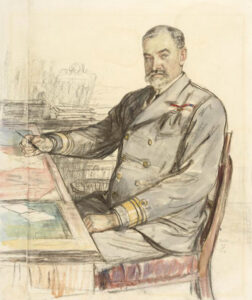 detachment impounded the luggage of Wilhelm Wassmuss, a German agent in Persia and shipped it, unopened, to London, where the Director of Naval Intelligence, Admiral Sir William Reginald Hall discovered that it contained the German Diplomatic Code Book, Code No. 13040.
detachment impounded the luggage of Wilhelm Wassmuss, a German agent in Persia and shipped it, unopened, to London, where the Director of Naval Intelligence, Admiral Sir William Reginald Hall discovered that it contained the German Diplomatic Code Book, Code No. 13040.
The section retained “Room 40” as its informal name even though it expanded during the war and moved into other offices. Alfred Ewing directed Room 40 until May 1917, when direct control passed to Captain (later Admiral) Reginald ‘Blinker’ Hall, assisted by William Milbourne James. Although Room 40 successfully decrypted Imperial German communications throughout World War I, its function was compromised by the Admiralty’s insistence that all decoded information would only be analyzed by Naval specialists. This meant while Room 40 operators could decrypt the encoded messages they were not permitted to understand or interpret the information themselves. Whatever they couldn’t do, they accomplished a very great deal.

 I can’t believe that it has been eight long years since my father-in-law, Walt Schulenberg passed away. He was such a big part of my life, and the lives of his whole family. His sense of humor and wit brightened our days, and made us laugh. He loved hearing the laughter of his family. It just seems impossible that he has been gone for eight years already. I really miss him very much.
I can’t believe that it has been eight long years since my father-in-law, Walt Schulenberg passed away. He was such a big part of my life, and the lives of his whole family. His sense of humor and wit brightened our days, and made us laugh. He loved hearing the laughter of his family. It just seems impossible that he has been gone for eight years already. I really miss him very much.
Dad was a very talented man. He really got into the craft things later in his life. He did some large craft things like remaking lawn chairs, and his whirlygigs, but he made some small things too, like a puzzle made out of nuts and bolts, that you had to untangle, or the little novelty items made out of beans and coal. I don’t recall what those were exactly, but they usually had some funny little saying on them and a joke about the items glued on the card it was all put together on. In reality, they were little nothings, but they were funny, and the people at the craft fairs bought that stuff. I never could figure out how that stuff sold, but I suppose that it wasn’t the item itself, but rather the comedian selling the stuff that made it sell.
Dad was creative in so many other ways though, that were not funny…they were beautiful. He made steps for friends in Arizona when they used to spend the Winter in Yuma. He couldn’t stand to just sit still. He had to stay busy, and that was a great thing for the people he made things for. He would also go out into the desert to find things he could use for his crafts. I was always a little nervous about him wandering around in the desert, but he knew his way around, and his adventures were always fruitful. He found great stuff, and his artistic side turned the stuff into something that some one would like.
The people who knew him lost a great man eight years ago, and that is something that has left a hole in our 
 lives. I miss his smile, and his welcoming ways. I feel very fortunate to have been able to call him my father-in-law, and my second dad. I know that many people don’t like their in-laws, and I find that very sad, because most in-laws have so much to offer to the people their children have married. I suppose you have to be willing to look at the gift you have been given, and be thankful for it, and I am so thankful for the gift of my father-in-law (and my mother-in-law), because they were awesome. I wish they were still here with us, because I miss them both very much.
lives. I miss his smile, and his welcoming ways. I feel very fortunate to have been able to call him my father-in-law, and my second dad. I know that many people don’t like their in-laws, and I find that very sad, because most in-laws have so much to offer to the people their children have married. I suppose you have to be willing to look at the gift you have been given, and be thankful for it, and I am so thankful for the gift of my father-in-law (and my mother-in-law), because they were awesome. I wish they were still here with us, because I miss them both very much.

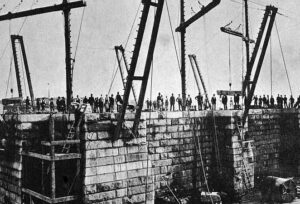 There are places in this world that have hidden places in them that might just surprise most people. At one time, these hidden places might have had a useful purpose, but later their usefulness was gone, and they were either closed up or removed altogether. The Brooklyn Bridge in New York City is one of those places. You can’t really remove a hidden place in a bridge, but you can close the hidden places up if they are no longer needed.
There are places in this world that have hidden places in them that might just surprise most people. At one time, these hidden places might have had a useful purpose, but later their usefulness was gone, and they were either closed up or removed altogether. The Brooklyn Bridge in New York City is one of those places. You can’t really remove a hidden place in a bridge, but you can close the hidden places up if they are no longer needed.
When the Brooklyn Bridge was built, portions of surrounding neighborhoods in Manhattan and Brooklyn had to be demolished in order to build the bridge’s two anchorage sections, which attach the bridge to land. This affected several local merchants more so than others, and because of that impact, the situation had to be addressed. To compensate local merchants and offset some of the bridge’s $15 million budget, wine cellars and other vaulted spaces were incorporated into the bridge’s design. The storage space that had once belonged to the merchants, had to be replaced with useable space, so several wine merchants and other alcohol sellers began renting the spaces in 1883, when the bridge was completed, and except for the Prohibition years, the cellars remained in operation until World War II.
The wine cellars were filled with wine before the Brooklyn Bridge was even operational. The cellars were the idea of bridge engineer John Roebling, and they were completed by his son Washington Roebling after John died. They were created as a solution to an alcohol problem, designed with the hoped that building the cellars would keep the wine dark, cool and secure. The cellars were huge. They are connected by a series of twisting tunnels named after French roads.
Prohibition brought a new era for the cellars. They were turned into newspaper storage areas. When Prohibition 
 ended, they briefly reopened to the public, but World War II led the city of New York to take over permanent management of the cellars and close them to visitors. Since then, almost no one has seen them. The cellars remain empty and forgotten by the thousands of pedestrians and motorists who cross the Brooklyn Bridge every day. They are used for storage, and an occasional homeless person who finds their way inside.
ended, they briefly reopened to the public, but World War II led the city of New York to take over permanent management of the cellars and close them to visitors. Since then, almost no one has seen them. The cellars remain empty and forgotten by the thousands of pedestrians and motorists who cross the Brooklyn Bridge every day. They are used for storage, and an occasional homeless person who finds their way inside.
 We are all used to alternative forms of energy these days. From electric cars to solar heating to wind energy, things have changed some. One thing I had never heard of before, however, is a solar-powered airplane. Of course, the plane was built to promote green energy, and I don’t personally think that green energy is a totally feasible option…sorry if anyone disagrees. Nevertheless, someone came up with the idea of using solar energy for an airplane. I have to admit that the idea of a plane operating totally on solar energy is something that would make me a little apprehensive, nevertheless, one was developed. And it was successful too. A solar-powered airplane completing the 10th leg of it’s journey by landing in Arizona after a 16-hour flight from California in 2015. Now, admittedly, a normal plane could have made the trip in a couple of hours, so in that way, it was rather anticlimactic.
We are all used to alternative forms of energy these days. From electric cars to solar heating to wind energy, things have changed some. One thing I had never heard of before, however, is a solar-powered airplane. Of course, the plane was built to promote green energy, and I don’t personally think that green energy is a totally feasible option…sorry if anyone disagrees. Nevertheless, someone came up with the idea of using solar energy for an airplane. I have to admit that the idea of a plane operating totally on solar energy is something that would make me a little apprehensive, nevertheless, one was developed. And it was successful too. A solar-powered airplane completing the 10th leg of it’s journey by landing in Arizona after a 16-hour flight from California in 2015. Now, admittedly, a normal plane could have made the trip in a couple of hours, so in that way, it was rather anticlimactic.
The plane was the brain-child of Bertrand Piccard, who dreamed of an airplane of perpetual endurance…able to fly day and night without fuel. With the construction of this plane, that dream had been realized, and with the flight of co-founder Andre Borschberg’s flight, history had been made. Still, who has 16 hours to make that flight, when you can drive it in 12 hours. The spindly, single-seat experimental aircraft, dubbed Solar Impulse 2, arrived in Phoenix shortly before 9pm, following a flight from San Francisco that took it over the Mojave  Desert. The solar plane’s pilots were required to take up meditation and hypnosis in training, so they could stay alert for long periods.
Desert. The solar plane’s pilots were required to take up meditation and hypnosis in training, so they could stay alert for long periods.
The plane’s capacity was one…just the pilot in the tiny cockpit. Andre Borschberg, who alternated with fellow pilot Bertrand Piccard at the controls for each segment of what they hope will be the first round-the-world solar-powered flight. “I made it to Phoenix, what an amazing flight over the Mojave desert,” Borschberg said in a Twitter post. Borschberg was the pilot for the Japan-to-Hawaii trip over the Pacific last July, staying airborne for nearly 118 hours…shattering the prior record of 76 hours for a non-stop, solo flight set back in 2006 by the late Steven Fossett in his Virgin Atlantic Global Flyer. Solar Impulse 2 set new duration and distance records for solar-powered flight too.
Not all was picture-perfect with the venture, however. The project was dealt a setback when the Solar Impulse suffered severe battery damage, requiring repairs and testing that grounded it in Hawaii for nine months. After repairs were made, Piccard completed the trans-Pacific crossing, reaching San Francisco after a flight of nearly three days, more than three times the 18 hours Amelia Earhart took to fly solo from Hawaii to California in the 1930s. In many ways, the project would seem to be a failure, but the one real success it had was that the  flights were made without fuel. Its four engines were powered solely by energy collected from more than 17,000 solar cells built into its wings. Surplus power is stored in four batteries during the day, to keep the plane aloft on extreme long-distance flights. The carbon-fiber plane, with a wingspan exceeding that of a Boeing 747 and the weight of a family car, is unlikely to set speed or altitude records. It can climb to 28,000 feet, and cruise at 34 to 62 miles per hour. It’s not something I think I would choose to fly in, but then it’s possible that down the road, when it isn’t an experimental plane, and it can carry more people, I might find myself traveling in just such a plane.
flights were made without fuel. Its four engines were powered solely by energy collected from more than 17,000 solar cells built into its wings. Surplus power is stored in four batteries during the day, to keep the plane aloft on extreme long-distance flights. The carbon-fiber plane, with a wingspan exceeding that of a Boeing 747 and the weight of a family car, is unlikely to set speed or altitude records. It can climb to 28,000 feet, and cruise at 34 to 62 miles per hour. It’s not something I think I would choose to fly in, but then it’s possible that down the road, when it isn’t an experimental plane, and it can carry more people, I might find myself traveling in just such a plane.

 My son-in-law, Travis Royce is rather a fanatic when it comes to his yard. He really always has been. When you think about it, that works out very well for my daughter, Amy…his wife. It’s not that Travis does all the work, but that he is happy to help with the projects that make their back yard a sanctuary where they love to spend time. This year, they have been working on their covered patio are. Travis built that a while back, and now they are adding to the ambiance with lighting, flower gardens, and games, like the latest addition to the back yard…darts. They got the dart board up, and I mentioned to Amy that now she could beat him at darts indoors and outdoors. Well, she informed me that he won the first game played out on the patio. They are both good dart
My son-in-law, Travis Royce is rather a fanatic when it comes to his yard. He really always has been. When you think about it, that works out very well for my daughter, Amy…his wife. It’s not that Travis does all the work, but that he is happy to help with the projects that make their back yard a sanctuary where they love to spend time. This year, they have been working on their covered patio are. Travis built that a while back, and now they are adding to the ambiance with lighting, flower gardens, and games, like the latest addition to the back yard…darts. They got the dart board up, and I mentioned to Amy that now she could beat him at darts indoors and outdoors. Well, she informed me that he won the first game played out on the patio. They are both good dart 
 players, so my comment was really a joke, but Travis proved that he has a good handle on the game. They have several back yard games that they like to play, but they also like to just sit and relax…enjoying the quiet nights.
players, so my comment was really a joke, but Travis proved that he has a good handle on the game. They have several back yard games that they like to play, but they also like to just sit and relax…enjoying the quiet nights.
Travis is a homebody in many ways, something I would never have expected when he and Amy first started dating, about 27 years ago, but time changes us all. Those party/bar scenes get old after a while, and it too loud anyway, so most people would rather have friends over and enjoy a little bit more quiet party atmosphere. Nevertheless, Amy and Travis do like to go to the casinos in their area, and they tend to do pretty well there. Still, they aren’t about throwing their money away, they just play for fun periodically. When we go to visit, we enjoy that too, and 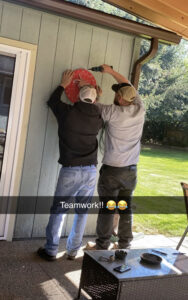
 sometimes we do pretty well. Maybe it’s all about having them there with us, I don’t know. Sometimes, I think we should give them our money to play while we stand and watch.
sometimes we do pretty well. Maybe it’s all about having them there with us, I don’t know. Sometimes, I think we should give them our money to play while we stand and watch.
Travis is an excellent “griller,” as anyone who has had his food can attest. If the cooking is being done indoors, Amy is the cook, but if it’s being done outdoors, it’s all Travis. He prides himself in grilling great steaks and seafood too. His friends consider themselves lucky to have been invited for the barbecue. Amy and Travis are very social people, and entertaining is something they both enjoy, so those summer barbecues are always fun times for them and for everyone who is privileged to attend. Today is Travis’ birthday. Happy birthday Travis!! Have a great day!! We love you!!

